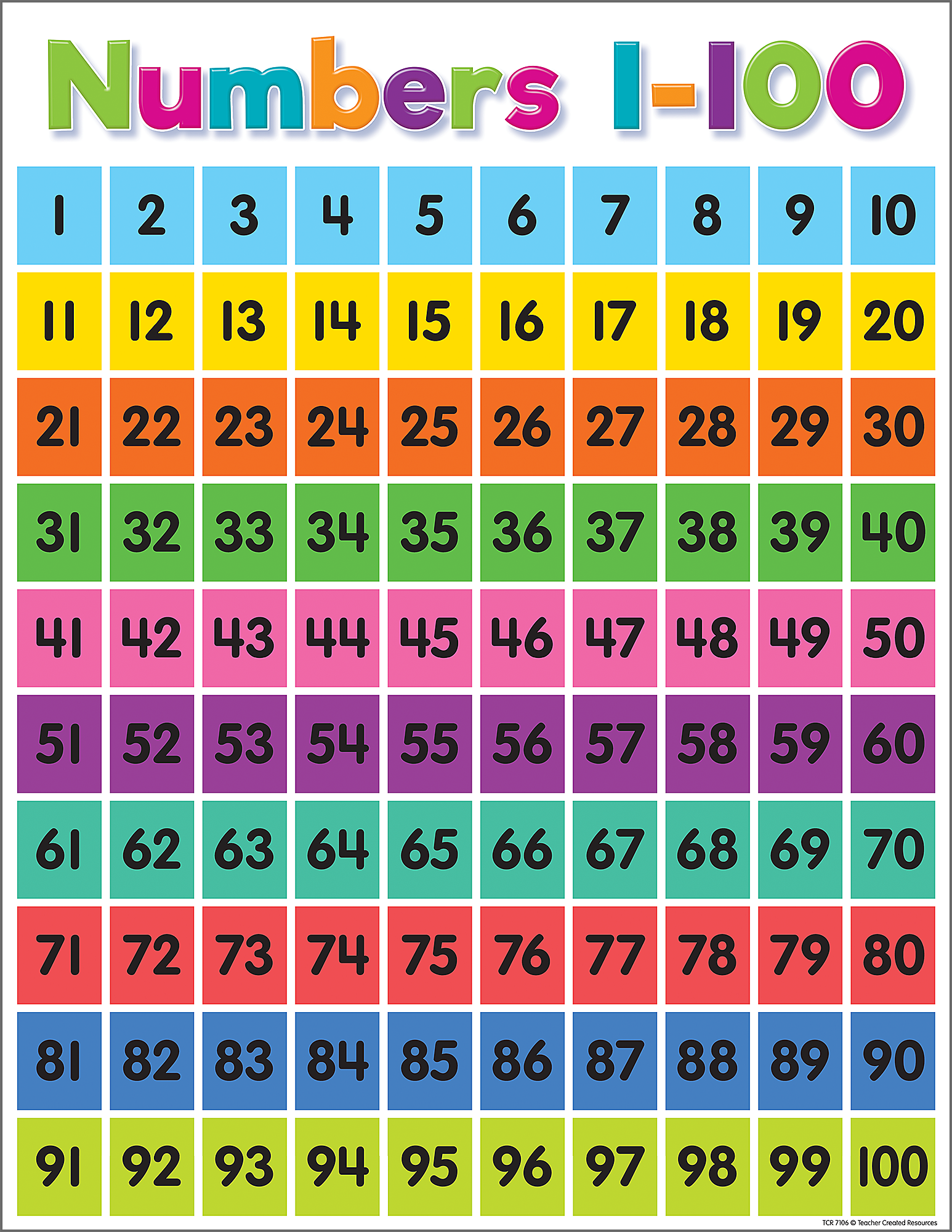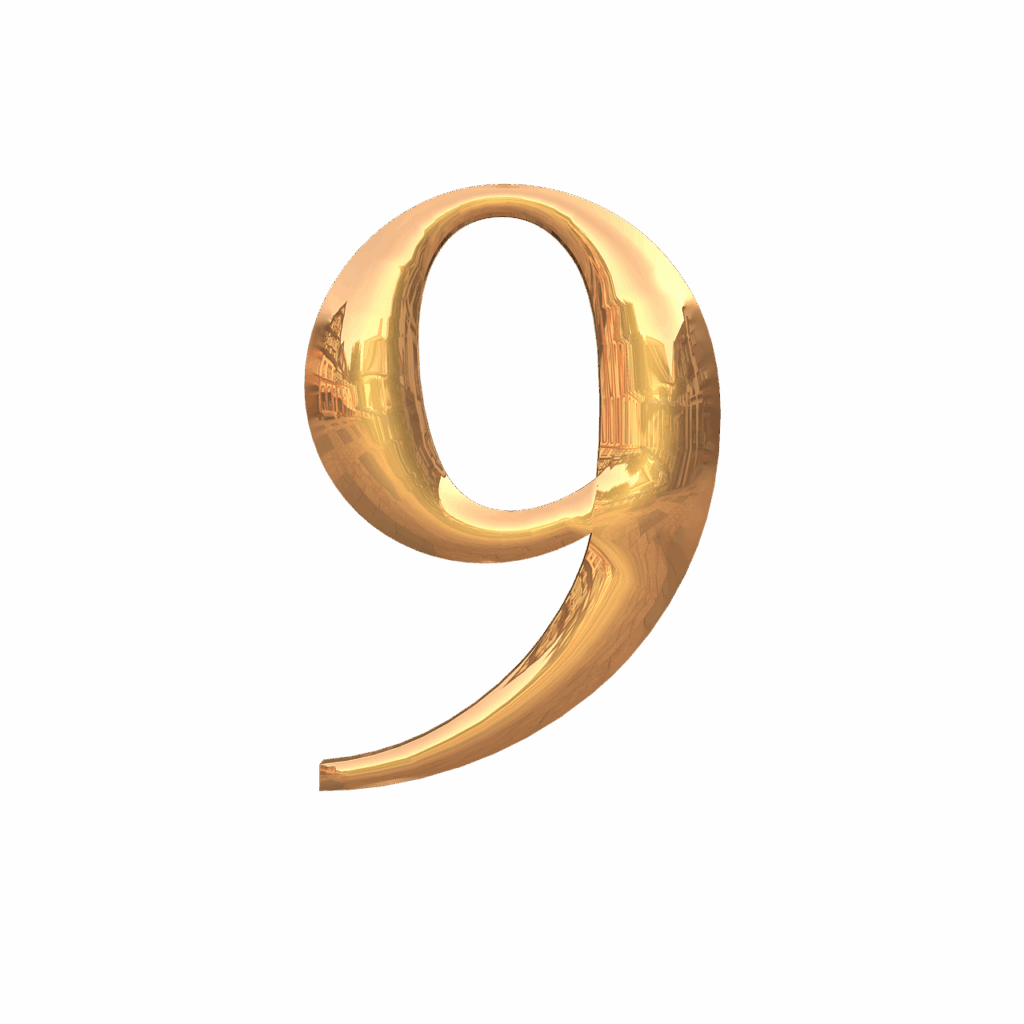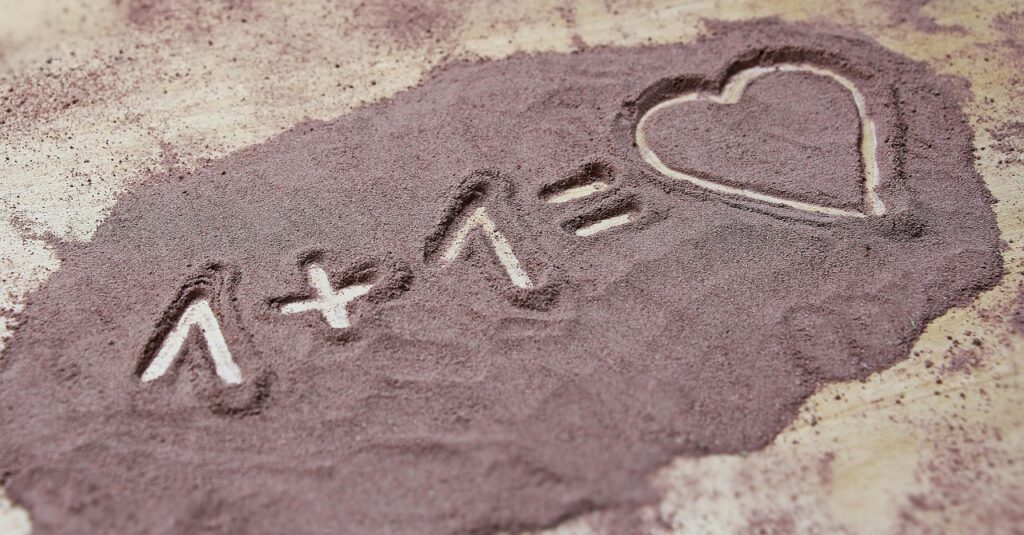
Ever wondered why the number 9 feels a little… extra? Like, it’s not just another digit hanging out between 8 and 10, right? This numerical rockstar is everywhere, from the deep computations of advanced mathematics to the superstitions whispered across ancient cultures. It’s a math superstar with some seriously cool tricks up its sleeve, a big deal in science, sports, and even popping up in our everyday lives in ways you might not have even noticed.
From the moment we learn to count, 9 stands out as the highest single-digit number in our decimal system, immediately giving it a certain gravitas. But its influence stretches far beyond the classroom! You’ll find it influencing everything from the number of players on a baseball team to the classification of elements on the periodic table. It’s truly a fascinating number with a significant impact on our world, weaving its way into history, spirituality, and even the very fabric of our universe.
So, if you’re ready to have your mind blown and see the number 9 in a whole new light, buckle up! We’re about to dive into the power and mystery of this incredible digit. Get ready to uncover some truly surprising facts that make 9 more than just a number; it’s a phenomenon waiting to be explored. Let’s get started on this exciting journey into the heart of number 9!
1. **The Amazing Evolution of its Glyph: A Journey Through Time**The humble digit 9, as we know it today, has a surprisingly rich and convoluted history, far more intricate than just a simple stroke of a pen. Its origins can be traced back to the ancient Indian civilization, specifically as part of the Brahmi numerals around 300 BC. Back then, various Indians conceptualized and wrote a digit 9 that bore a striking resemblance to the modern closing question mark, albeit without the familiar bottom dot.
As centuries unfolded and different Indian civilizations left their mark, the form of the digit began its transformative journey. The Kshatrapa, Andhra, and Gupta periods saw an intriguing development: these cultures started to curve the bottom vertical line of the initial glyph, gradually coming up with a shape that was strikingly similar to a ‘3’. This evolution wasn’t linear or entirely transparent, as “How the numbers got to their Gupta form is open to considerable debate,” highlighting the mystery embedded in its early transformation.
The Nagari script, a later iteration in this numerical lineage, further elaborated on this evolving form. They ingeniously continued the bottom stroke, guiding it to create a circle that effectively enclosed the existing ‘3-look-alike’. This creative enclosure was done “in much the same way that the sign @ encircles a lowercase a,” providing a vivid image of this crucial design change. As time progressed, the aesthetic preferences shifted, leading to the enclosing circle growing larger, its line extending downwards beyond the circle, while the internal ‘3-look-alike’ simultaneously shrunk in prominence.
Eventually, through this continuous refinement and artistic simplification, the distinct ‘3-look-alike’ inside the expanding circle diminished to nothing more than a ‘squiggle’. This was a pivotal point in its visual history. It was at this stage that the Arabs, adopting and disseminating these Indian numerals, “simply connected that squiggle to the downward stroke at the middle,” thus forming a shape that is remarkably close to our contemporary 9. Subsequent European changes to the glyph were, by all accounts, “purely cosmetic,” solidifying the form we recognize today.
Adding another layer of fascination, the modern glyph for 9 also exhibits interesting characteristics in typography. While it generally features an ‘ascender’—a part that extends above the main body of the letter—in most contemporary typefaces, it often takes on a ‘descender’—a part that extends below the baseline—in typefaces designed with text figures. This visual duality is also mirrored in its potential for confusion with its inverted cousin, the number 6. To prevent ambiguity on labels or objects that might be flipped, the number 9 is often pragmatically underlined, or “handwritten with a straight stem,” providing a clear distinction and ensuring clarity in its universal application.
2. **Mind-Blowing Math Magic: The Digital Root & Divisibility Rule**In the captivating world of mathematics, the number 9 isn’t just another digit; it’s a true superstar, boasting properties that can genuinely make your head spin! This numeral holds a “unique place” and stands out as a “mathematical marvel” with intriguing characteristics that captivate both budding mathematicians and seasoned experts alike. Its tricks are so consistent, they almost feel like magic.
Prepare for the first dose of mind-blowing math magic: the “Multiplication Magic” of nine. Here’s the deal: if you multiply 9 by *any* whole number (and we’re talking about anything except zero, of course!), then take the digits of that answer and add them together, and keep doing that until you’re left with just one single digit, guess what? You’ll always end up with a 9! It’s like a numerical boomerang. For instance, “2 × 9 = 18 (1 + 8 = 9)”, or “121 × 9 = 1089 (1 + 0 + 8 + 9 = 18; 1 + 8 = 9)”. Even for massive numbers like “482729235601 × 9 = 4344563120409”, adding all those digits gives you 45, and 4+5 is, you guessed it, 9! This property is beautifully encapsulated by the rule: “In base 10, a number is evenly divisible by nine if and only if its digital root is 9.”
This incredible trait isn’t exclusive to 9, however, as “The only other number with this property is three.” This makes 9 part of a very elite club. This fascinating behavior stems from the fact that 9 is simply one less than the base we usually operate in (10 – 1 = 9). This ‘base-minus-one’ relationship gives rise to these curious patterns. It’s also worth noting that 9 is classified as a “Kaprekar number,” which is another little mathematical badge of honor that adds to its mystique.
But wait, there’s more! Let’s talk about the “difference between a base-10 positive integer and the sum of its digits” – it’s always “a whole multiple of nine.” Seriously, try it! Take the number 41; the sum of its digits is 5. Now, subtract that sum from the original number: 41 – 5 = 36. And what’s the digital root of 36? You know it: 3 + 6 = 9! It works every single time. Or consider 35967930; its digits sum to 42. Subtract 42 from 35967930, and you get 35967888. The sum of its digits (3+5+9+6+7+8+8+8) is 54, and 5+4 is 9. Pure genius, right?
And just when you thought 9 couldn’t get any cooler, consider this: “Subtracting two base-10 positive integers that are transpositions of each other yields a number that is a whole multiple of nine.” Imagine you have 41 and its transposition, 14. Subtract them: 41 – 14 = 27. The digital root of 27 is 2 + 7 = 9. Even with larger numbers, like 36957930 and 35967930, their difference is 990000, clearly a multiple of nine. This incredible property holds true “regardless of the number of digits that are transposed,” making 9 a numerical wizard in the realm of place value and manipulation.

3. **A Composite Number’s Charm: Its Place in Pure Mathematics**Beyond its quirky digital root properties, the number 9 truly shines as a fundamental building block in the expansive landscape of pure mathematics. At its core, 9 (or nine, if you prefer) is more than just a symbol; it’s a “natural number that follows 8 and precedes 10,” establishing its basic position within our counting system. It proudly stands as “an integer and a cardinal number,” meaning it’s used for counting quantities, providing a fundamental measure of the world around us.
Furthermore, in the intricate taxonomy of numbers, 9 is “classified as a real number,” distinguishing it from the more abstract concept of imaginary numbers. This grounding in reality solidifies its practical and theoretical significance. Perhaps most notably, in our familiar decimal system, “Nine is the highest single-digit number,” giving it a sense of finality and completeness within the initial set of numeric characters. When you gather a group of nine of anything, you’ve officially formed an “ennead,” a term that beautifully evokes this specific quantity.
Delving deeper, 9 is categorized as a “composite number,” a crucial classification in number theory. This means it has proper divisors other than 1 and itself, specifically 1 and 3. As the text states, it is “3 times 3 and hence the third square number,” placing it squarely (pun intended!) within the sequence of perfect squares. It’s also interesting to discover that “9 is a Motzkin number,” which relates to combinatorics and paths on a grid, adding a layer of sophisticated mathematical context to this seemingly simple digit.
Its unique attributes continue to stack up: “It is the first composite lucky number,” an intriguing blend of common mathematical classifications with a touch of numerical folklore. Furthermore, “9 is the second non-unitary square prime (3^2),” a specific and advanced categorization that speaks to its prime factorization. It even boasts a “unique aliquot sum 4 which is itself a square prime,” making it an anomaly, as “9 is the only square prime with an aliquot sum of the same form.” The journey of its aliquot sequence—9, 4, 3, 1, 0—consists of five members, marking it as “the second composite member of the 3-aliquot tree,” showcasing its complex relationships within number theory.
The number 9 also makes an appearance in other specialized mathematical domains. For instance, “There are nine Heegner numbers,” which are special integers related to class number one of imaginary quadratic fields. The fact that “9 = 3^2^1” qualifies it as an “exponential factorial,” a fun and specific power configuration. And in a delightful partnership, “Eight and 9 form a Ruth-Aaron pair” under a specific definition, highlighting their unique relationship through prime factors. Geometrically speaking, “A polygon with nine sides is called an enneagon (technically) or nonagon (in common usage),” giving 9 a tangible shape in our three-dimensional world, rounding out its impressive mathematical resume.
4. **The Elemental & Organic Side: Number 9 in Chemistry**The number 9 isn’t just a star in the realm of pure mathematics; it also plays a significant, foundational role in the intricate and fascinating world of “Chemistry.” When we delve into the building blocks of matter, the periodic table, 9 holds a special place. It is, quite distinctly, “the atomic number of fluorine,” marking its position as a key element in our chemical lexicon.
Fluorine, with its atomic number 9, is no ordinary element. It stands out prominently on the periodic table for its intense reactivity. The context highlights that “Fluorine, the ninth element on the periodic table, is the most reactive and electronegative of all elements.” This isn’t just a minor detail; it “indicating the unique properties that number 9 can represent in science.” Its high reactivity means it readily forms compounds with almost every other element, making it a powerful force in chemical reactions and industrial applications.
Beyond individual elements, the number 9 also features in the nomenclature of organic chemistry, the study of carbon-containing compounds essential to life. When we talk about hydrocarbons – compounds made solely of hydrogen and carbon – the number 9 takes on a structural significance. Specifically, “An alkane hydrocarbon with a chain of nine carbon atoms is called nonane.” This term, rooted in the ‘non-‘ prefix signifying nine, is a fundamental part of how chemists name and categorize these vital molecules. Thus, 9 acts as a crucial descriptor, helping scientists understand and communicate the complex architectures that underpin both natural and synthetic substances.

5. **Life’s Rhythms: Biological Connections to Nine**It might seem like the number 9 is mostly about abstract math or rigid scientific structures, but surprisingly, it’s intimately woven into the very fabric of life itself, particularly in the realm of “Biology.” One of the most universally recognized connections of the number 9 to human life revolves around gestation and birth, a profound and miraculous process.
Indeed, “A human pregnancy normally lasts nine months.” This approximate duration is a fundamental rhythm of human biology, marking the period of development from conception to birth. The context further emphasizes this by stating, “The typical human pregnancy lasts about 9 months, marking a significant period in human development and family life.” It’s a testament to the biological clock and the precise timing inherent in nature’s design, ensuring the development of new life within a consistent, nine-month cycle.
While the human pregnancy stands out as the most prominent biological link, the number 9 can also subtly connect to other developmental stages. For instance, in the context of human dental development, the text points out the average age “when children begin to lose their baby teeth, around 6 to 9 years.” This highlights another biological transition point that falls within the sphere of nine, indicating its presence in various stages of human growth and development. These biological instances underscore how this single digit isn’t just an abstract concept but a tangible marker in the natural processes that shape life.

6. **Cosmic Connections: Nine in Astronomy**For a long time, the number 9 held a very special, almost romantic, place in our understanding of the cosmos, specifically concerning our immediate galactic neighborhood. Before the reclassification events of 2006, when Pluto was officially designated as a dwarf planet, “the Solar System was said to have nine planets.” This long-held belief was deeply embedded in astronomy education and popular culture, painting a picture of a solar system defined by this magical number. For generations, 9 represented the complete family of our sun’s major celestial companions.
However, the number 9 doesn’t just feature in past planetary counts; it also plays a role in the more intricate, cyclical dance of celestial mechanics, particularly with eclipses. The Saros series, a repeating cycle of eclipses separated by a specific period, offers another fascinating glimpse into the number’s astronomical relevance. For example, “The Saros number of the solar eclipse series that began on February 6, 2568 B.C.E. and ended on April 4, 1252 B.C.E.” was Saros Series 9.
This particular solar eclipse series wasn’t just a fleeting event; it had an impressive duration and contained a significant number of celestial occurrences. “The duration of Saros series 9 was 1316.20 years, and it contained 74 solar eclipses,” illustrating the profound and enduring nature of these astronomical patterns over millennia. It’s a powerful reminder of the deep cosmic rhythms that shape our universe, with 9 marking a specific, enduring sequence.
Not to be outdone, lunar eclipses also had their own Saros Series 9. “The Saros number of the lunar eclipse series that began on June 26, 2501 B.C.E. and ended on September 5, 1167 B.C.E.” also fell under this numerical designation. This series, too, spanned a vast stretch of time, with “The duration of Saros series 9 was 1334.23 years, and it contained 75 lunar eclipses.” These specific celestial timings and patterns, marked by the number 9, reveal its integral role in tracking and understanding the grand, predictable mechanics of the universe, connecting this digit to cosmic phenomena that unfold over unimaginable periods.
Okay, are you ready for even more mind-blowing insights into the number 9? Because we’ve only just scratched the surface! This incredible digit doesn’t just dominate math, chemistry, and astronomy; it weaves its way into our everyday lives, spiritual beliefs, and even pop culture in ways that are just plain awesome. From ancient rituals to modern technology, 9 truly proves it’s more than just a number – it’s a phenomenon! So let’s keep this wild ride going and uncover even more amazing facts. Get ready to have your mind officially blown by the sheer versatility of our favorite numerical rockstar!

7. **Measuring the Immeasurable: Nine in Probability**When it comes to understanding how likely something is to happen, the number 9 steps up in a surprisingly powerful way, especially in the sophisticated world of probability. Think of it as a super-precise ruler for measuring uncertainty! In probability calculations, the number 9 isn’t just a digit; it’s a whole system for expressing likelihood, specifically as a logarithmic measure of an event’s probability. It’s all about the negative of the base-10 logarithm of the probability of the event’s complement – sounds complex, but it’s super useful!
Let’s break it down: imagine an event that’s 99 percent likely to occur. That means there’s only a 1 percent unlikelihood, or 0.01. When you plug that into the formula, you get −log 10 0.01 = 2 nines of probability. It’s a neat way to quantify how certain or uncertain something is, giving us a clearer picture than just raw percentages. And if an event has zero probability? Well, that gives zero nines, which makes perfect sense!
This isn’t just academic talk, either. This ‘nines’ system finds super practical applications in the real world. For example, think about the purity of chemicals, the effectiveness of industrial processes, or the availability of critical systems. These can all be neatly expressed in nines. So, if a system boasts “five nines” (that’s 99.999 percent!) availability, it means it’s so reliable that its total downtime is no more than a mere five minutes per year. How cool is that for a single digit impacting such crucial metrics? It showcases 9’s role in precision and reliability across vital sectors.
8. **Driving the Digital Age: Nine in Technology**Believe it or not, our numerical superstar, the number 9, is also a quiet force behind some serious tech stuff! It might not be the flashiest number in Silicon Valley, but its presence is crucial for global communication, document standards, and even keeping our computers running smoothly. It’s truly integrated into the digital backbone of our modern world, ensuring things operate with precision and clarity.
For starters, did you know that ISO 9 is the standard set by the International Organization for Standardization? This standard is all about the transliteration of Cyrillic characters into Latin ones. It’s like a universal translator that helps us read and understand texts written in different alphabets, bridging linguistic gaps across the digital landscape. And for those of you who dabble in word processing, in the Rich Text Format specification, 9 also plays a starring role as the language code for the English language. How neat is it that our everyday digital communication relies on this single digit?
But wait, there’s more! In the fascinating world of computer system administration, the concept of ‘uptime’ – which measures how long a computer system has been up and running without a hitch – is sometimes expressed in “nines.” Yep, it’s literally the number of ‘9’ digits in the percentage of time a computer is normally operational. So, if a system administrator talks about “five nines” reliability, they’re talking about an astounding 99.999 percent reliability. This translates to an incredibly impressive total downtime of no longer than five minutes *per year*! It’s clear that in technology, 9 isn’t just a number; it’s a benchmark for excellence and unwavering performance.
Read more about: Unearthing the Beasts: 12 Forgotten ’90s Powerhouses That Still Outrun Modern Machines by 2025

9. **Sacred & Spiritual Journeys: Nine in Religion**From ancient traditions to modern faiths, the number 9 holds a profoundly special place, often symbolizing completeness, divine power, or significant periods of devotion. It’s a number that resonates deeply with spiritual seekers across the globe, carrying layers of meaning that connect humanity to the divine. So, if you’ve ever felt a mystical pull towards the number 9, you’re definitely not alone!
In Judaism, for instance, the first nine days of the Hebrew month of Av are a deeply meaningful period. They’re collectively known as “The Nine Days” (Tisha HaYamim) and mark a period of semi-mourning, leading up to Tisha B’Av, which is the ninth day of Av. This is a solemn day commemorating the destruction of both Temples in Jerusalem. This continuous observance highlights 9’s role in remembering pivotal historical and spiritual events within the faith.
Christianity, too, embraces the significance of nine. There’s a powerful story of Jesus healing ten lepers, with a poignant detail that “nine of whom did not even thank him,” a reminder of gratitude. In the Catholic Church, a novena is a beautiful and common devotion consisting of prayers said, most typically, on nine successive days. These prayers are offered to obtain special graces, making 9 a symbol of fervent, sustained petition. Furthermore, in Catholic faith, there are also believed to be “9 choirs of holy angels,” each with their own unique role and hierarchy, linking the number directly to the celestial order.
The Bahá’í Faith takes the significance of nine to another level. As the highest single-digit number in base ten, 9 beautifully “symbolizes completeness” within their belief system. It’s not just an abstract idea; the very word “Bahá'” in the Abjad notation has a numerical value of 9, cementing its foundational importance. It’s no wonder then that a “9-pointed star is used to symbolize the Bahá’í religion,” serving as a powerful visual representation of this profound number. Even in Buddhism, 9 is highly revered, as “Important Buddhist rituals usually involve nine monks,” underscoring its role in spiritual practice and communal worship.

10. **Cultural Quirks & Dragon Lore: Nine in Global Beliefs**Get ready for some serious cultural revelations, because the number 9 stirs up a fascinating mix of beliefs and superstitions around the world! It’s a number that can bring immense luck and power in some cultures, while in others, it can send shivers down your spine. This kind of duality just goes to show how deeply numbers are woven into the fabric of human tradition and storytelling.
Let’s jet over to China, where nine (九 pinyin jiǔ) is undeniably a superstar! It’s considered a seriously good number in Chinese culture because, phonetically, “it sounds the same as the word ‘longlasting’ (久 pinyin jiǔ).” This makes it a favored number for celebrations like weddings, where couples wish for enduring happiness and union. But the coolest connection? Nine is “strongly associated with the Chinese dragon, a symbol of magic and power.” We’re talking about a creature with nine forms, described by nine attributes, and even having “nine children”! The dragon’s scales are even intricately tied to 9, with “9×13 scales, 9×9 being yang (masculine, or bad influence) and 9×4 being yin (feminine, or good influence).” This legendary status is so profound that the dragon often symbolizes the Emperor, and you’ll find the number nine in countless ornaments within Beijing’s magnificent Forbidden City, showcasing its imperial power.
And the grandeur doesn’t stop there! The circular altar platform, known as the Earthly Mount, within the Temple of Heaven is a breathtaking testament to 9’s significance. It features a central marble plate, surrounded by a ring of nine plates, then a ring of 18, and so on, culminating in “a total of nine rings, with the outermost having 81=9×9 plates.” It’s a truly majestic display of numerical harmony and symbolic power.
Now, let’s take a quick trip across the sea to Japan, and things get a little… different. While China sees luck, “The Japanese consider 9 to be unlucky,” and it all comes down to sound again! In Japanese, 9 sounds similar to the word for “pain” or “distress” (苦 kunrei ku). So, if you ever find yourself there, maybe don’t offer nine of something as a gift! The fear of this number even has a name: enneaphobia. It’s amazing how a simple sound can completely flip a number’s cultural perception, isn’t it?
11. **Rhythms of Sports & Music: Nine in Action**Hold onto your hats, because the number 9 isn’t just about ancient glyphs and mystical connections; it’s right there in the heart-pounding action of sports and the soul-stirring melodies of music! This digit definitely knows how to make an entrance, whether it’s scoring goals or hitting high notes. It’s truly a number that embodies both precision and passion in diverse fields.
In the world of sports, 9 is often synonymous with star power and key positions. If you’re into pocket billiards, “Nine ball is the standard professional pocket billiards variant played in the United States.” It’s a game of skill and strategy where 9 takes center stage! And for all you soccer fanatics, you already know the deal: “In association football (soccer), the center-forward/striker traditionally (since at least the fifties) wears the number 9 shirt.” This number is reserved for the primary goal-scorer, the player who brings the firepower and often the glory!
Over on the baseball diamond, “nine represents the right fielder’s position,” making it a crucial part of the defensive lineup. But that’s not all for baseball; a standard game itself is famously played over “9 innings,” further cementing the number’s importance in team structure and strategy. And for the rugby enthusiasts, both union and league codes feature 9 prominently: “In rugby union, nine is the number generally worn by the scrum half,” and “in rugby league, nine is the number generally worn by the hooker.” These are pivotal roles, underscoring the prestige and responsibility associated with the number 9 across various athletic arenas.
Now, let’s pivot to the harmonious realm of music, where 9 also strikes a chord! In music theory, “a ninth is the ninth note of a musical scale or the interval between the first note and the ninth.” It adds a rich complexity to compositions. Building on this, “A ninth chord is a chord with a ninth,” creating those lush, full sounds that composers adore. But there’s a fascinating, almost eerie, superstition in Western classical music: the “curse of the ninth.” This refers to the belief that “a composer who writes a ninth symphony will die soon.” Beethoven, who famously left his Tenth Symphony unfinished, is often cited as the first victim of this intriguing musical myth! And if you’re ever lucky enough to hear a group of nine voices or instruments performing together, you’re listening to a “nonet,” a truly captivating ensemble.

12. **Everywhere You Look: Nine in Everyday Life & Beyond**Alright, buckle up because the number 9 isn’t done with us yet! It pops up in the most unexpected corners of our lives, from legal proceedings to ancient myths, and even those little quirks that make life interesting. Seriously, once you start looking, you’ll see 9 is truly everywhere, a silent orchestrator in our daily routines and grand narratives.
Consider the pillars of justice in the United States: “Nine judges sit on the United States Supreme Court.” This specific number is chosen to prevent tie votes and ensure a majority decision, showcasing 9’s role in governance and law. And speaking of law enforcement, have you ever heard the term “K-9”? It’s genius! It “pronounces the same as canine and is used in many U.S. police departments to denote the unit working with police dog.” It’s a brilliant linguistic play where 9 helps represent a vital service.
Beyond the serious stuff, 9 injects itself into pop culture and common sayings. Who hasn’t heard that “a cat has nine lives”? This myth highlights feline resilience and the mystical qualities humans have attributed to them for centuries. Or perhaps you’ve been told someone is “dressed ‘to the nines'”? It means they’re dressed up as much as they can possibly be, looking absolutely fabulous! From the imaginative realms of literature, “There are nine circles of Hell in Dante’s ‘Divine Comedy,'” a powerful symbolic structure for eternal punishment. And in the world of psychology and education, “Stanines are measured on a scale of 1 to 9,” providing a standardized way to measure achievement.
But the reach of 9 extends even further into history and legend. In the powerful narratives of Norse Mythology, “Nine is a significant number.” Odin, the Allfather, famously “hung himself on an ash tree for nine days to learn the runes,” a testament to profound sacrifice for wisdom. Even geographical names carry its weight, like “Kowloon in Hong Kong” which literally means “Nine dragons,” reflecting a rich cultural heritage. There’s also the fascinating historical concept of “The Nine Worthies,” who were figures believed to embody chivalry, and the mysterious “Nine Unknown Men,” legendary custodians of ancient sciences.
And let’s not forget the fun factor! Many mathematical magic tricks have a connection to the number nine. This is because every multiplication of nine adds up to nine, any number minus the sum of all digits becomes a multiplication of nine, and any three-digit number minus the same number in reverse becomes a multiplication of nine. It’s like a built-in numerical cheat code! In our digital age, dialing 9-1-1 connects us to emergency services, making 9 synonymous with help and rescue. It’s truly mind-boggling how this single digit, the number 9, is not just a mathematical concept, but a vibrant thread woven into the very fabric of our lives, cultures, and imagination.
Read more about: Doesn’t It Feel Free? These 12 Stars Are Ditching The Glam And Embracing Their Natural Beauty Like Never Before!
Well, wasn’t that a journey? We started by peeling back the layers of its ancient glyph and delving into its mind-bending mathematical properties. Then we journeyed through its scientific footprint in chemistry and biology, and gazed up at its cosmic connections in astronomy. Now, we’ve explored its mystical roles in religion, its intriguing cultural quirks across continents, its energetic presence in sports, and its melodic notes in music. And finally, we’ve seen how it quietly influences so many aspects of our daily lives, from legal systems to popular sayings. The number 9 truly is a numerical chameleon, changing its significance and impact depending on where you find it. It’s a symbol of completion, mystery, power, and even a bit of magic. So, next time you spot a 9, take a moment to appreciate the sheer depth and breadth of meaning it carries – it’s way more than just a digit!








